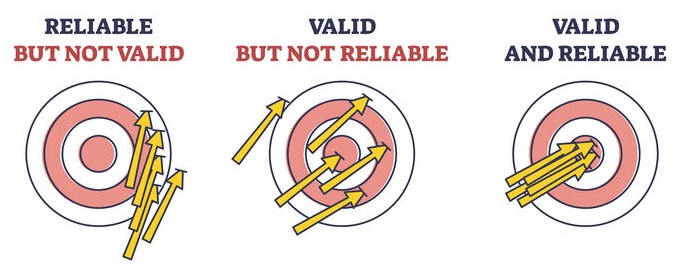Note that your final mark will not be saved in the system.
B1 Importance of and requirements for administration of fitness testing GapFill
You must fill all the gaps before clicking ‘Check Answers!’

There are often multiple fitness tests that can be used to assess the same component of fitness. When weighing up which test is best to use, it is important to take into account three key considerations: the reliability, validity and practicality of each test.
Reliability
The reliability of fitness tests refers to the of results. There are a number of factors that can affect this:
- Many tests require equipment to be each time before it is used, in order to ensure that measurements are accurate. For example, the force value that shows up when the is used must represent the actual force the performer applies. Sometimes this is out, leading to greater or lesser force values than the participant is actually exerting.
- It is not always possible for a performer to possess the same level of each time they perform a test, which could lead to results that aren't necessarily representative of a performer's fitness. For example, a performer might perform better the second time they perform a fitness test as they have a previous result that they want to beat. This could show up as an improvement in fitness where in reality it might just be because they tried harder.
- Whether a test is performed indoors or outdoors could also influence the reliability of results. Tests that are performed outdoors are subject to which may slow a performer down or cause them to slip. The of indoor vs outdoor environments can also influence the amount of grip a performer can get, improving their performance in tests requiring turns, such as the Yo-Yo test.
- The more a person is in administering a test, the more reliable the results are likely to be. This is because they are more likely to comply with the standardised test procedures, ensuring that the test is carried out under the exact same conditions every time.
Validity
The validity of fitness tests refers to how well a test is at measuring a specific component of fitness. For example, it can be argued that tests for aerobic endurance contain a significant component, and are therefore not reflective of the demands of typical aerobic events such as the marathon. The 30 m sprint test for speed also uses a standing start, which can be argued tests as much as it does speed, whereas the 30 m flying sprint test allows the performer to build-up their speed beforehand, so is more reflecting of pure speed.
Validity can also refer to how much a test relates to the sport someone participates in. The number of test options for each component of fitness attempts to overcome this issue. For example, there is a range of tests, each testing the range of movement of a different muscle group in the body; therefore, the most valid test would be one that targets the muscles used in the performer's sport.
Practicality
The practicality of fitness tests refers to how they can be carried out. A practical test is one that:
- Uses equipment, such as waist-to-hip ratio as opposed to bioelectrical impedance analysis for body composition
- Can be used on multiple at once, such as the multistage fitness test
- Requires little time to set up, perform, and analyse the data generated, such as the test as opposed to the test for balance